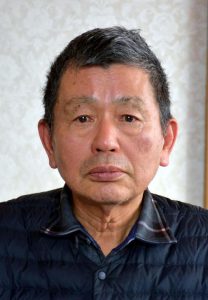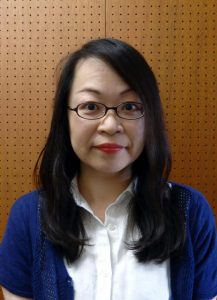Specialists interpret application of Hiroshima A-bombing photos for UNESCO “Memory of the World” register
Dec. 1, 2023
by Kyosuke Mizukawa, Senior Staff Writer
The Hiroshima City government and five media organizations, including the Chugoku Shimbun, have submitted a joint application with the United Nations Educational, Scientific and Cultural Organization (UNESCO)’s “Memory of the World” International Register for registration of 1,532 photos and two films in a collection titled “Visual archives of Hiroshima atomic bombing—photographs and films in 1945.” For their interpretations of the application, we spoke with Satoru Ubuki, a former professor at Hiroshima Jogakuin University who has been engaged in research into atomic bombing-related materials, and Akiko Kubota, an assistant professor at the Hiroshima University Research Institute for Radiation Biology and Medicine who specializes in archival studies.
Satoru Ubuki, former professor, Hiroshima Jogakuin University
Upon hearing of the application, I felt that internalization of the A-bombing experience had entered a new phase. When the A-bomb Dome was registered as a UNESCO World Heritage site in 1996, it was for a category that included ruins and buildings. Conversely, this “Memory of the World” application has the aim of registering materials that Hiroshima’s people have relied on when speaking of their own memories of the atomic bombing. If registered, the materials will serve as a universal foundation worldwide for greater understanding of the atomic bombing of Hiroshima.
Documentary A-bombing photos have certainly played an important role in communicating the A-bombing memory. After the war, A-bomb exhibits of photos and other such events evoked a response, with the campaign against atomic and hydrogen bombs also generating widespread social interest. The films in the collection can also be considered important materials.
At the same time, I anticipate that there will be further discussion of other options for registering materials related to the A-bombing, not limited to photos and film footage. An example of another option would be documents from immediately after the A-bombing, such as those listed in Hiroshima Prefectural History: A-bombing Documents, a collection published in 1972. Many important records exist, including materials from a research team joined by the physicist Yoshio Nishina. It might also be worth considering the taped recordings of A-bombing testimonies and the cards used for recordkeeping in surveys of A-bomb survivors.
The process for the application has brought curators at the Hiroshima Peace Memorial Museum and people across a variety of organizations face-to-face with the documentation system, making the present time a good opportunity to think broadly about how A-bombing materials should be preserved. Even better would be if the application process could lead to concrete action as exemplified by the Hiroshima Society for the Research of Atomic Bomb Sufferers, an organization formed in 1968, through which citizens themselves surveyed and collected A-bombing materials with the aim of creating catalogs to prevent the materials from being dispersed and lost forever.
In retrospect, during the deliberations over designation of the A-bomb Dome as a UNESCO World Heritage site, representatives of China and the United States expressed their reservations about or declined to participate in the decision. The historical perceptions of World War II lay behind that resistance. Given the current international political situation, I am waiting and watching how the deliberations on the registration of these A-bombing materials turn out.
Akiko Kubota, assistant professor, Hiroshima University Research Institute for Radiation Biology and Medicine
The submitted photos and films are A-bombing materials that many people should see to raise awareness of the fact that damage from nuclear weapons is not limited to the past but something that could also happen in the future. Registration of the materials, significant in promoting Hiroshima’s message to the world, is something I am hopeful will come to pass.
The photos and films taken at the site of devastation immediately after the bombing have a particularly high level of documentary value and objectivity. Regardless of any language barriers, the materials have the capacity to readily communicate with people from overseas. The photos and films in the submission should serve as a gateway for people worldwide to grow more interested in the variety of other A-bombing materials, including personal accounts written by A-bomb survivors.
On the other hand, I hope the Hiroshima City government and the media organizations that applied for registration will not simply wait until 2025 for the decision on registration but also will collaborate with each other to shore up the system of preservation and utilization of all such materials.
The fact that the 1,532 photos and two films were organized using the same format and the information on their contents and archival locations was shared represents a major step forward. In the future, one important question is how the photos and films owned by the different parties are to be communicated across websites and other means. It will also be important to share information on the condition of the films and photographic prints that have been archived in different storage environments by different owners and, based on that, to work collaboratively to prevent deterioration of all such materials.
As A-bomb survivors continue to age and it becomes more and more difficult to listen to firsthand accounts of their experiences in the atomic bombing, all A-bombing materials, not only photos and films but also personal accounts, literary materials, and medical records, are growing increasingly important. Enhancing the system of preservation and utilization of such materials and increasing collaboration among the organizations concerned is also required.
What concrete measures should be undertaken by the A-bombed city to permanently preserve the wide variety of A-bomb materials in existence and to utilize them more effectively? My hope is that the application will serve as the impetus for discussions on the grand design for such an effort.
(Originally published on December 1, 2023)
The Hiroshima City government and five media organizations, including the Chugoku Shimbun, have submitted a joint application with the United Nations Educational, Scientific and Cultural Organization (UNESCO)’s “Memory of the World” International Register for registration of 1,532 photos and two films in a collection titled “Visual archives of Hiroshima atomic bombing—photographs and films in 1945.” For their interpretations of the application, we spoke with Satoru Ubuki, a former professor at Hiroshima Jogakuin University who has been engaged in research into atomic bombing-related materials, and Akiko Kubota, an assistant professor at the Hiroshima University Research Institute for Radiation Biology and Medicine who specializes in archival studies.
Internationalization of A-bombing experience proceeds apace
Satoru Ubuki, former professor, Hiroshima Jogakuin University
Upon hearing of the application, I felt that internalization of the A-bombing experience had entered a new phase. When the A-bomb Dome was registered as a UNESCO World Heritage site in 1996, it was for a category that included ruins and buildings. Conversely, this “Memory of the World” application has the aim of registering materials that Hiroshima’s people have relied on when speaking of their own memories of the atomic bombing. If registered, the materials will serve as a universal foundation worldwide for greater understanding of the atomic bombing of Hiroshima.
Documentary A-bombing photos have certainly played an important role in communicating the A-bombing memory. After the war, A-bomb exhibits of photos and other such events evoked a response, with the campaign against atomic and hydrogen bombs also generating widespread social interest. The films in the collection can also be considered important materials.
At the same time, I anticipate that there will be further discussion of other options for registering materials related to the A-bombing, not limited to photos and film footage. An example of another option would be documents from immediately after the A-bombing, such as those listed in Hiroshima Prefectural History: A-bombing Documents, a collection published in 1972. Many important records exist, including materials from a research team joined by the physicist Yoshio Nishina. It might also be worth considering the taped recordings of A-bombing testimonies and the cards used for recordkeeping in surveys of A-bomb survivors.
The process for the application has brought curators at the Hiroshima Peace Memorial Museum and people across a variety of organizations face-to-face with the documentation system, making the present time a good opportunity to think broadly about how A-bombing materials should be preserved. Even better would be if the application process could lead to concrete action as exemplified by the Hiroshima Society for the Research of Atomic Bomb Sufferers, an organization formed in 1968, through which citizens themselves surveyed and collected A-bombing materials with the aim of creating catalogs to prevent the materials from being dispersed and lost forever.
In retrospect, during the deliberations over designation of the A-bomb Dome as a UNESCO World Heritage site, representatives of China and the United States expressed their reservations about or declined to participate in the decision. The historical perceptions of World War II lay behind that resistance. Given the current international political situation, I am waiting and watching how the deliberations on the registration of these A-bombing materials turn out.
Collaboration to enhance preservation and utilization
Akiko Kubota, assistant professor, Hiroshima University Research Institute for Radiation Biology and Medicine
The submitted photos and films are A-bombing materials that many people should see to raise awareness of the fact that damage from nuclear weapons is not limited to the past but something that could also happen in the future. Registration of the materials, significant in promoting Hiroshima’s message to the world, is something I am hopeful will come to pass.
The photos and films taken at the site of devastation immediately after the bombing have a particularly high level of documentary value and objectivity. Regardless of any language barriers, the materials have the capacity to readily communicate with people from overseas. The photos and films in the submission should serve as a gateway for people worldwide to grow more interested in the variety of other A-bombing materials, including personal accounts written by A-bomb survivors.
On the other hand, I hope the Hiroshima City government and the media organizations that applied for registration will not simply wait until 2025 for the decision on registration but also will collaborate with each other to shore up the system of preservation and utilization of all such materials.
The fact that the 1,532 photos and two films were organized using the same format and the information on their contents and archival locations was shared represents a major step forward. In the future, one important question is how the photos and films owned by the different parties are to be communicated across websites and other means. It will also be important to share information on the condition of the films and photographic prints that have been archived in different storage environments by different owners and, based on that, to work collaboratively to prevent deterioration of all such materials.
As A-bomb survivors continue to age and it becomes more and more difficult to listen to firsthand accounts of their experiences in the atomic bombing, all A-bombing materials, not only photos and films but also personal accounts, literary materials, and medical records, are growing increasingly important. Enhancing the system of preservation and utilization of such materials and increasing collaboration among the organizations concerned is also required.
What concrete measures should be undertaken by the A-bombed city to permanently preserve the wide variety of A-bomb materials in existence and to utilize them more effectively? My hope is that the application will serve as the impetus for discussions on the grand design for such an effort.
(Originally published on December 1, 2023)









